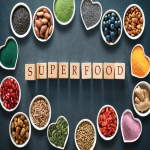Healthy nutrition for children
Feeding children and feeding adults includes the same nutrients as Vitamins, minerals, carbohydrates, proteins and fats. Children need different amounts of nutrients depending on their age.
The importance of healthy nutrition for children:
Children build their bodies and build habits with them that will continue for the rest of their lives. The path they take and the habits they build during their childhood usually complement them for the rest of their lives, so we want it to be a good path.
The basics of healthy nutrition for children at different ages:
The basics of healthy nutrition for children to build strong bodies capable of resisting diseases
- Proteins:
Protein is important for children’s growth. Choose seafood, lean meat and poultry, eggs, beans, peas, unsalted nuts and seeds as a good source of protein.
- Vegetables:
The main source of fibers, vitamins and minerals. Offer your child a variety of fresh vegetables.
A variety of vegetables, dark green, red, orange, beans, peas, starches, etc., should be provided along the whole week.
Upon eating canned or frozen vegetables, look for varieties that are lower in sodium.
- Healthy fats:
Appropriate amounts of raw nuts and natural oils such as olive and coconut oil should be taken as they contain omega 3 and vitamins such as E and D.
- Fruit:
Fruit is full of vitamins and minerals. Encourage your child to eat a variety of fresh fruits instead of juice.
Your child can eat frozen, canned or dried fruit but the best choice is to eat fresh fruits.
If your child drinks fruit juice, make sure it is 100 percent juice with no added sugars and reduce his portion.
Canned fruit should be light or packed in its own juice, which means it's low in added sugar.
Keep in mind that a quarter cup of dried fruit is equivalent to a full cup of fresh fruit.
Eating dried fruits in excessive quantities, contributes to an increase in calories
- Cereals and legumes:
Choosing whole grains such as whole wheat bread, oatmeal, popcorn, quinoa, or brown rice is the best way to eat grains as a healthy source of starches.
Limit your intake of refined or ground grains such as white bread, pasta and rice
- Dairy:
Encourage your child to eat and drink low-fat dairy products, which are rich in protein and a good source of calcium.
You should limit the following in your child's diet:
1- Sugar:
Limit added sugars such as brown sugar, corn sweeteners, corn syrup, honey, and more.
Natural sugars, such as those found in fruit and milk, are not considered added sugars.
Nutrition labels on food bags and cans should be checked for sugar.
Choose breakfast cereals with minimal added sugars.
Avoid drinks with added sugars such as soda, sports and energy drinks.
2- Saturated and trans fats:
Reduce trans fats and hydrogenated fats as much as possible, as they are harmful to health.
Vegetable oils such as olive and coconut oil are a healthy alternative as they provide essential fatty acids and vitamin E.
Healthy fats are also found naturally in olives, nuts, avocados, and seafood.
3- Sodium:
A large percentage of children have had too much sodium in their daily diets.
Encourage your child to snack on fruits and vegetables instead of chips and crackers.
Check nutrition labels and look for products that are low in sodium.
You are what you eat
The United States Department of Agriculture (USDA) has published new nutritional guidelines to help maintain optimal health throughout life, especially childhood.
If we want to maintain our health, we must stop eating foods that do not only give us calories without health benefits or harm our health, but we must search for the nutritional value of the food we eat.
Eating an unhealthy diet can lead to obesity, as well as cardiovascular disease, diabetes, high blood pressure, and everything else that obesity causes. It can also lead to cancer as well as tooth decay, anaemia, high blood pressure and weak bones.
So the old saying "you are what you eat" is very true.
Small steps towards healthy eating
It's best to take things in small steps like:
1 - Removing something unhealthy from the shopping list for the week.
2- Add family meals gradually.
3- Start with one bite of vegetables first.
The important thing is to start and keep it up, this is how all good and healthy habits are built
Good eating and feeding habits must be built, because our lives and the lives of our children depend on them.
4- Portion sizes should be appropriate for age (the same amount should not be given to children and adults).
5- The meal plate consists of: half of the plate is vegetables and fruits, a little more than a quarter of whole grains, and a little less than a quarter of protein.
6- Plan all meals for the whole week. Many times we end up eating unhealthy foods because they are easy and available. Planning ahead, such as preparing some meals and snacks in advance, can help.
7- Shop in a healthy way. Once you've written down your nutritional plans, put healthy ingredients and snacks on the list. Leave soda, sweets and fast food, as not having them in the house prevents eating them.
8 - Eat meals with the family. Cook together too. Family meals are good for kids and families, and are the best way to set a good example.
9 - You must keep trying. It may take some time for tastes and habits to change. Children and many adults may need to try something over and over again before realising it tastes good.









